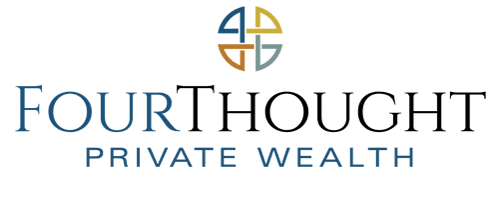Year-End Tax Tips for Retirement
In this month’s Coffee with FourThought, Joel Johnson, Director of Financial Planning, is joined by Financial Planner Brad Patton for an update on current market conditions and the economic themes shaping investor decisions. The discussion includes recent data on growth and inflation, corporate earnings trends, and how Federal Reserve policy may influence the environment going forward. Joel and Brad also highlight key year-end planning items that may help investors stay aligned with their long-term goals. A live Q and A at the end of the session addresses participant questions on interest rates, spending patterns, volatility, and general planning considerations.
FourThought Private Wealth is owned by FourThought Financial Partners, LLC (FFPLLC) an SEC-registered investment advisor. For information pertaining to FFPLLC please contact FourThought Private Wealth or refer to the SEC’s website,www.adviserinfo.sec.gov. This presentation is provided for informational purposes, not as personal investment advice. This presentation may contain certain forward-looking statements which indicate future possibilities. Any hypothetical example is intended for illustrative purposes only and does not represent an actual client or an actual client’s experience, but rather is meant to provide an example of the process and the methodology. Any reference to a market index is included for illustrative purposes. It should not be assumed that your account performance will correspond directly to any benchmark index. There is no guarantee views and opinions expressed herein will come to pass. Past performance is no guarantee of future results.
